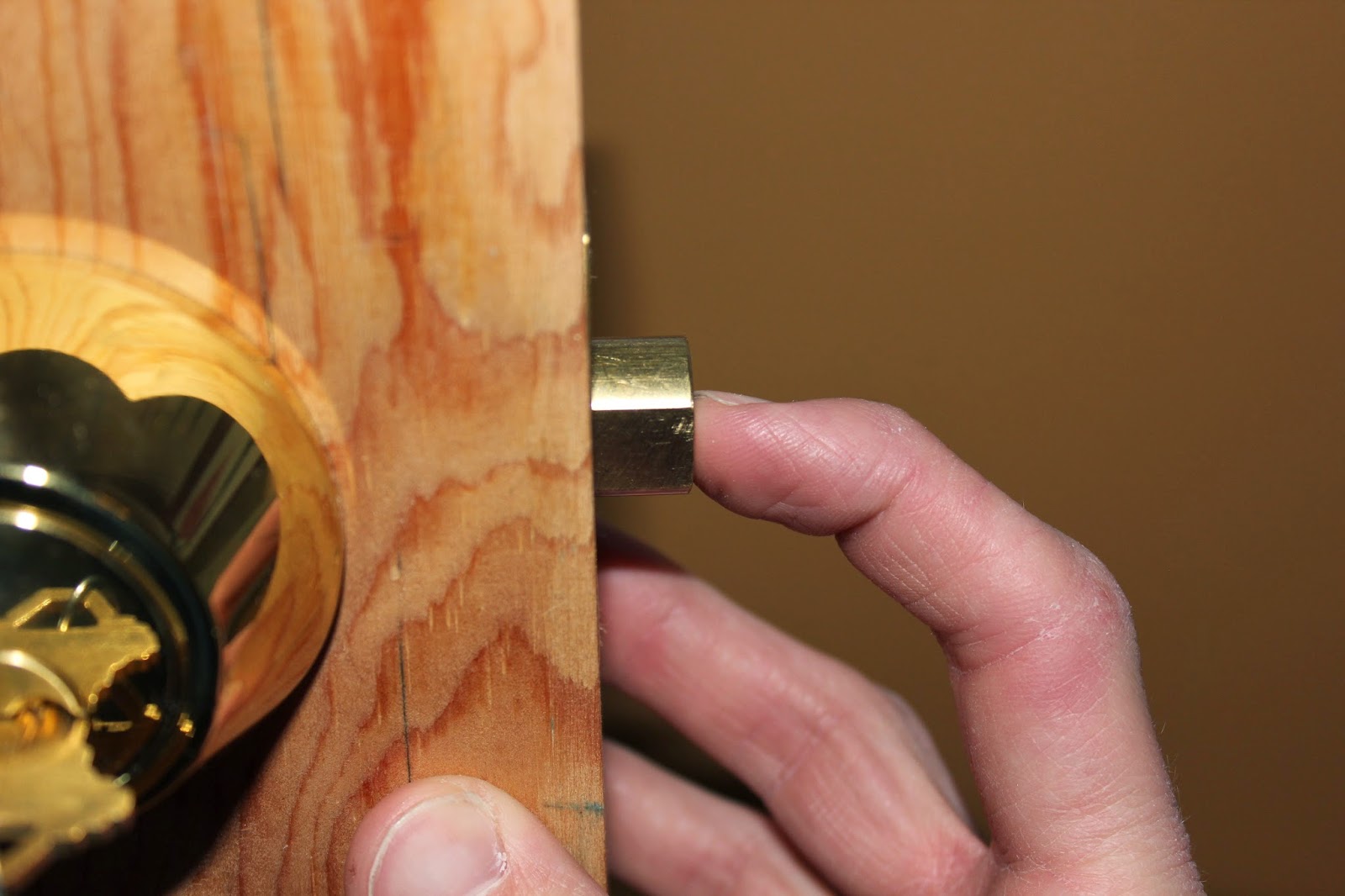Deadbolts come in varying shapes, sizes and grades. That said, there are three common problems to look for whenever you examine a deadbolt installation. Fortunately, these common problems are relatively minor and you can often remedy these issues yourself with some basic carpentry skills. Below are the three most common problems I have come across and my solutions for these problems:
Problem—Deadbolt
Does Not Deadlock: If the hole made in the doorjamb for the bolt
is not deep enough, the deadbolt cannot fully engage. This means that the bolt could be jimmied
open by a burglar. A deadbolt will not
deadlock unless it is fully extended.
 |
| Because this deadbolt has not been thrown all the way (1 inch throw), it is not deadlocked and can be pushed back into the bolt housing |
Solution: You can increase the depth of this hole
by removing the strike (and any metal plates behind it) and drilling a deeper
hole using a cordless drill equipped with a 1” Forstner bit. When done drilling, be sure to replace the
strike and any additional metal plates you removed earlier.
Problem—Strike
is Poorly Mounted: Many strikes are mounted only to the
doorjamb, using ½” screws. This means
that the door is more prone to kick-in attacks.
Solution:
You can purchase a Strike Reinforcement Plate to install or you can
purchase a deadbolt that already comes with a Strike Reinforcement Plate and
install it. Use 3” long screws to mount
the Reinforcement Plate.
Problem—Deadbolt
is Cheaply Made: Some of the lower end deadbolts are made from
cheaper metals, such as zinc. This means
that physical attacks against these locks with common hand tools are very
effective.
Solution:
Upgrade to a higher quality deadbolt—most quality deadbolts carry the
American National Standards Institute/Builders Hardware Manufacturers
Association (ANSI/BHMA) Grade 1 (best) or Grade 2 (good) rating. These ratings indicate that a product has
been tested against common burglary attacks and has a longer overall
lifespan. Grade 3 or no grade indicates
a lower resistance to burglary attacks and a shorter anticipated lifespan of
the lockset.
While I believe that “nothing is totally secure,” you can
however make something more secure
than it currently is. Doing this will
often deter criminals, many of whom are looking for the path of least
resistance.
DISCLAIMER: When undertaking any home repair project,
exercise common sense and good judgement.
When using power tools refer to all printed warnings listed in the
owner’s manual and always use eye protection.
Keep hands and other body parts away from sharp or moving objects and if
you’re unsure of anything, consult with a professional.